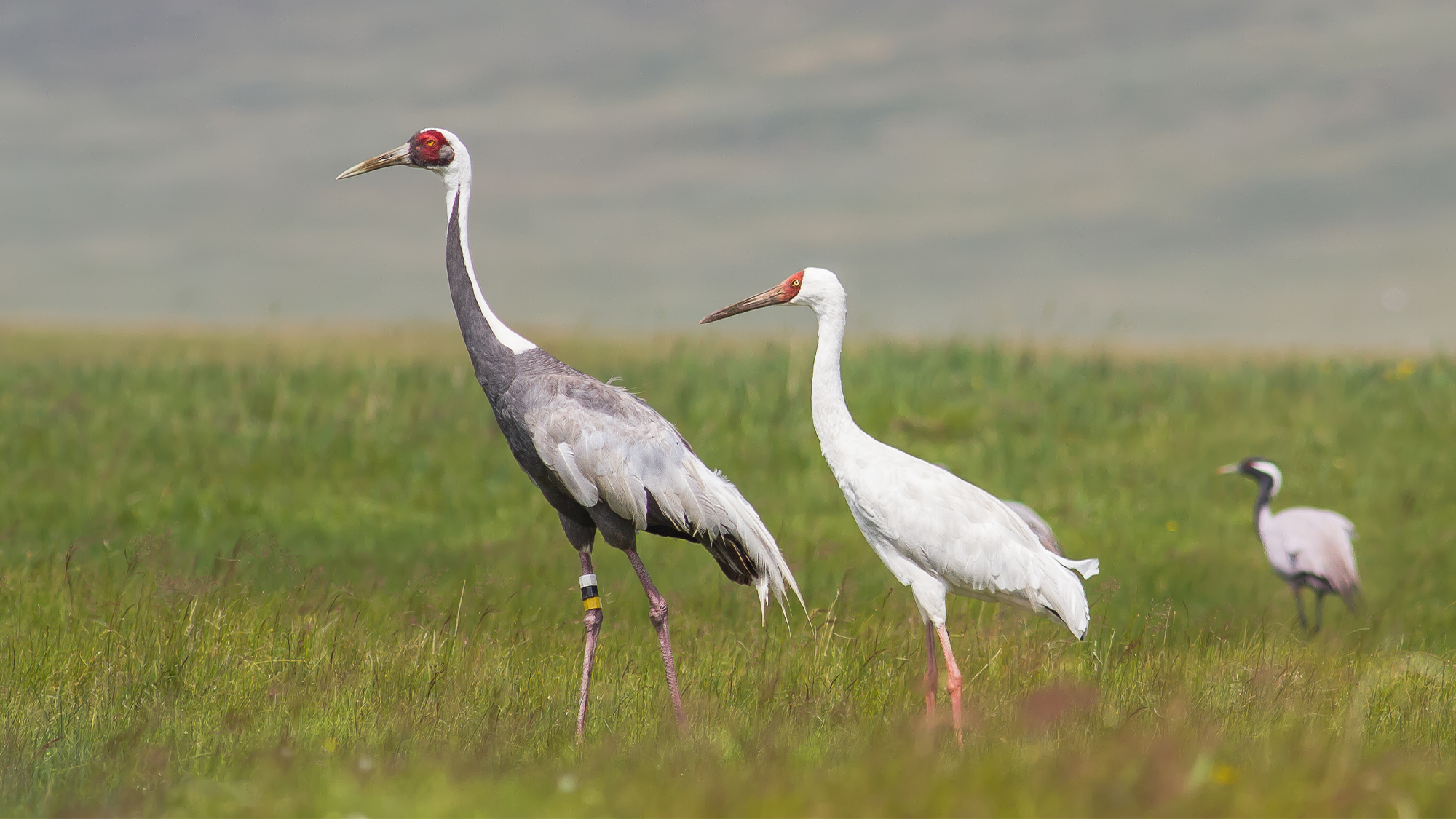

How do scientists follow an impressively long bird migration? They give a crane a GPS. A team of scientists used small GPS leg bands to follow 104 of these wading birds as they traveled across parts of Asia, Africa, and Europe. The tracking data revealed that some of their routes are more than 3,976 miles round trip, navigating several natural barriers along the way. They also saw that the cranes face several make-or-break decisions about where and when they stop. The findings are described in a study published September 23 in the journal Proceedings of the National Academy of Sciences (PNAS).
“Animals have to satisfy their own needs with what they can get from their environment, but both of these are changing constantly,” study co-author and University of Michigan postdoctoral researcher Scott Yanco said in a statement. “This creates an intriguing optimization problem that we wanted to know if cranes were solving through long-distance migration.”
[Related: Birds have ‘culture.’ Just look at these nests.]
The team studied four crane species–the common crane (Grus grus), demoiselle crane (Anthropoides virgo), black-necked crane (Grus nigricollis), and white-naped crane (Grus vipio). They all had to cross various natural barriers including the Himalayas and the Alps, Arabian desserts, and the Mediterranean Sea and experienced wildly different environmental conditions over a year.
These time periods were also synchronized with some of their important biological needs. This alignment was particularly pronounced when comparing data on air temperatures or resource availability on their wintering and summer breeding grounds. The demoiselle cranes, for example, migrated across the Tibetan plateau, and during that time had to contend with large fluctuations in temperature.
“We suspect this all has to do with different biological needs during these different times of the year,” said Yanco.
The common cranes clearly went to agricultural areas during the late summer. This aligns with the time of year when food is plentiful and when the birds are raising juveniles and preparing for fall migration. According to Yanco, this is what they would expect them to do to easily access food.

For some of the other species in the study, this access to food may come at a cost. The black-necked cranes had to decide between a safe roosting habitat and abundant resources.
“Amazingly, the balance between these competing needs changed over the year, depending on what the birds were doing,” said Yanco.
While migrating, the birds generally opted for safer roosting conditions. During breeding, they moved towards places where food was abundant.
“This type of shifting emphasis depending on what cranes need at any given time is what we were expecting to see,” Ivan Pokrovsky, a study co-author and postdoctoral scholar at the Max Planck Institute of Animal Behavior in Germany, said in a statement. “But we were blown away by how well the cranes used movement to resolve trade-offs among competing needs and to access certain environments during key periods of the year.”
[Related: These new interactive maps reveal the incredible global journeys of migrating birds.]
The team also used this data from the tracking study to develop a statistical framework that shows how the cranes’ movements relate to crops, nearby water bodies, temperature, and other aspects of the environment. Understanding how wild animals interact with their surroundings can give scientists a more nuanced view of how they survive.
According to the team, this kind of data is also crucial for developing better policies to address climate change and biodiversity loss. The statistical framework from this study can be applied to conservation and management efforts of wildlife.
“When we know how animals use certain environmental conditions, we can make better predictions about how species might respond to human-caused global change and develop more effective interventions that ensure we preserve the conditions species need to survive,” said Pokrovsky.